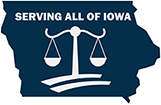- Walcott Personal Injury Attorneys
- Phone: 641-792-3595
- Directions
When accidents and injuries unexpectedly disrupt lives, personal injury lawyers become crucial allies. They advocate for those harmed by negligence, helping them secure proper compensation. This article delves into the important role personal injury lawyers play in guiding individuals through their claims and aiding in recovery.
Accidents are an unfortunate part of life, and understanding the degree of fault in personal injury claims is crucial for victims seeking compensation. Moreover, for cyclists, being aware of road safety tips and the common types of bicycle accidents can significantly reduce risks and ensure safer rides. This article delves into these aspects, combining insights on personal injury claims and cycling safety.
What is a Degree of Accident Fault in a Personal Injury Claim?
The degree of accident fault refers to the percentage of responsibility each party holds for an accident and its resulting damages. In personal injury claims, this concept plays a pivotal role in determining the compensation an injured person can recover.
Impact of Negligence Laws:
Negligence laws vary across states. In Iowa, the principle of modified comparative fault is applied. Under this standard, a judge or jury assigns a fault percentage to each party involved in the accident. If the injured party is found to be 51% or more at fault, they cannot recover any damages. Conversely, if their fault is 50% or less, they can still recover damages, but the amount will be reduced by their fault percentage.
Given the complexities involved, it's advisable to consult with an attorney who can help establish the other party's liability. Evidence such as accident reports, photographs, eyewitness statements, and police observations can significantly support a claim.
Road Bike Safety Tips for New Cyclists
Bicycling is a popular mode of transportation and recreation. However, it comes with risks, especially for new cyclists. Here are some essential safety tips:
1. Learn Local Traffic Laws:
Each city and state has distinct laws for cyclists. Understanding these can prevent accidents and legal issues.
2. Practice Safe Riding:
Before venturing into high-traffic areas, practice in safe zones. Learn to maneuver your bike, clip in and out of pedals, and use the brakes effectively.
3. Take a Safety Course:
4. Ride with Traffic:
Always ride in the same direction as traffic and stay as far right as practicable.
5. Wear a Helmet:
Helmets are essential for every ride to protect against head injuries.
6. Stay Visible:
Use reflective clothing and lights, especially at night. Bright clothing during the day enhances visibility.
7. Avoid Earbuds:
Stay alert to your surroundings by not wearing earbuds.
8. Pay Attention to Traffic:
Make eye contact with drivers and avoid riding in blind spots.
9. Maintain Your Bike:
Regularly check tire pressure and brakes to ensure your bike is in good condition.
10. Avoid Speeding:
Ride at a manageable speed to have ample reaction time.
Common Types of Bicycle Accidents and Prevention
Understanding common bicycle accidents can help in preventing them:
1. Right Hook Accidents:
These occur when a car turns right into a cyclist's path. To avoid this, position yourself slightly in front of vehicles at stop signs or lights, and avoid passing vehicles on the right.
2. Dooring Accidents:
These happen when a parked car door opens unexpectedly. Always ride at a safe distance from parked cars and stay alert.
3. Left Turn Accidents:
Cars turning left may not see cyclists, especially in poor lighting. Use bike lights, wear bright colors, and make eye contact with drivers at intersections.
4. Failure to Yield:
Cyclists should always yield at intersections and double-check for oncoming traffic, even when they have the right of way.
What to Do if You’re in a Bicycle Accident
If you are involved in a bicycle accident, taking the following steps can help protect your rights:
1. Seek Medical Attention:
Your health is the priority. Get checked even if injuries seem minor.
2. Report the Accident:
Notify the police and file an accident report.
3. Gather Evidence:
Take photos, collect witness statements, and document everything related to the accident.
4. Consult an Attorney:
An experienced attorney can help determine fault, file a claim, and guide you through the legal process.
We Are Here To Help
Remember, you are not alone in recovering from your injuries. We have helped thousands of Iowans through their physical, emotional, and financial recoveries. If you have questions about what you are going through, feel free to call our office for your confidential injury conference. We will take the time to listen to you and give you our advice concerning your injury matter at no cost or risk to you.
Free Book at No Cost
If you are not ready to speak with an attorney yet but would like to learn more about Iowa injury cases including tips about how you can avoid making common costly mistakes request a copy of our Iowa Personal Injury book which includes 14 myths about Iowa injury cases and 5 things to know before hiring an attorney.
If you have specific questions about your injury matter feel free to call our office to speak with our Injury team at 641-792-3595 or use our Chat feature by clicking here 24 hours a day/7 days per week. Your information will remain confidential and there is no cost or obligation.

